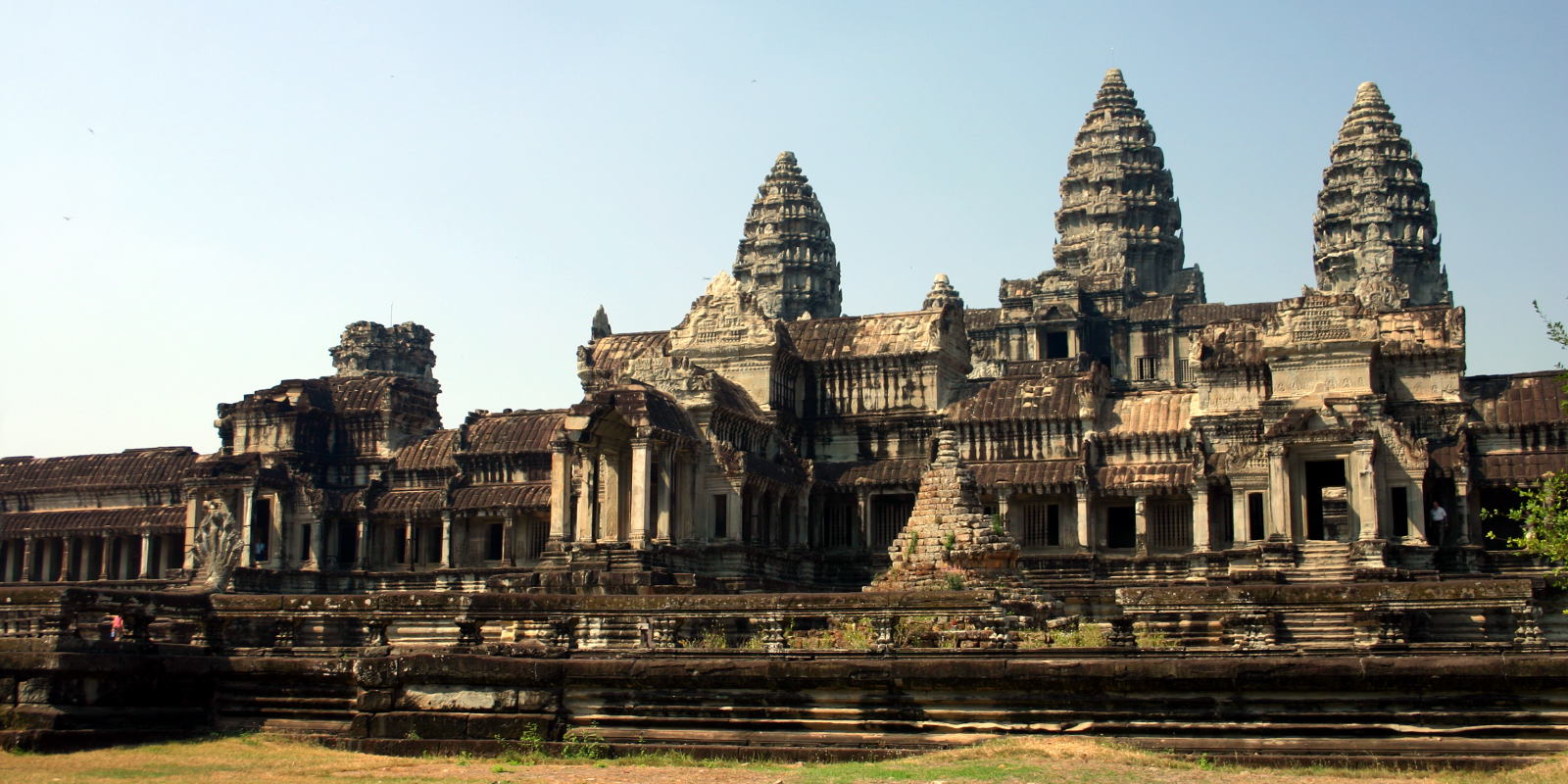Angkor Wat Temple

The "mother of all temples" - Angkor Wat. No photograph can quite capture the immensity of this monument (which may be a tomb as well as a temple.) Some of the apparent grandeur of the complex is due to clever perspective. The tip of the central tower is only 65 meters high, although its peak is more than 200 meters above the ground. However, many of the other statistics of the temple are still quite impressive. The temple is surrounded by a 200 meter wide moat (that's more than two football fields to you Americans). You cross the moat on a wide stone causeway to reach the outer wall, which itself is 5.5 kilometers long. Once you pass through the main gate in this wall, another causeway 350 meters long, leads to the inner sanctuary of the temple.
The main temple is built on three levels. The first level consists of an open gallery, with the inner wall continuously covered with bas-relief depicting scenes from the Mahabharata, the Ramayama and other stories from the Hindu pantheon (see satellite map below). It's nearly a kilometer walk to see the whole thing, but it's worth it. A flight of stairs leads to the second level which is less ornate, and a very steep stairway leads up to the top level with its central sanctuary.
The temple was built by King Suryavarman II around the middle of the twelfth century, at the height of the Khmer empire's power. Its unusual west-facing layout has led many to believe that it was intended as a funerary temple for Suryavarman himself.
Tip: Many guidebooks suggest visiting the temple in the late afternoon or sunset, when the sun is shining brightly on the west face as you walk down the grand causeway. While it's certainly true that the sun is at the best angle in the afternoon, the problem is that everybody ends up visiting the temple between 3:00 p.m. and sunset. The crowds are so big in the cool season that it's really not a good experience. The fact is that the temple is almost perfectly symmetrical, so the east face is almost identical to the west face. To avoid the crowds, try visiting in the morning. Enter by the little used east gate, and walk through the temple to exit the west gate.